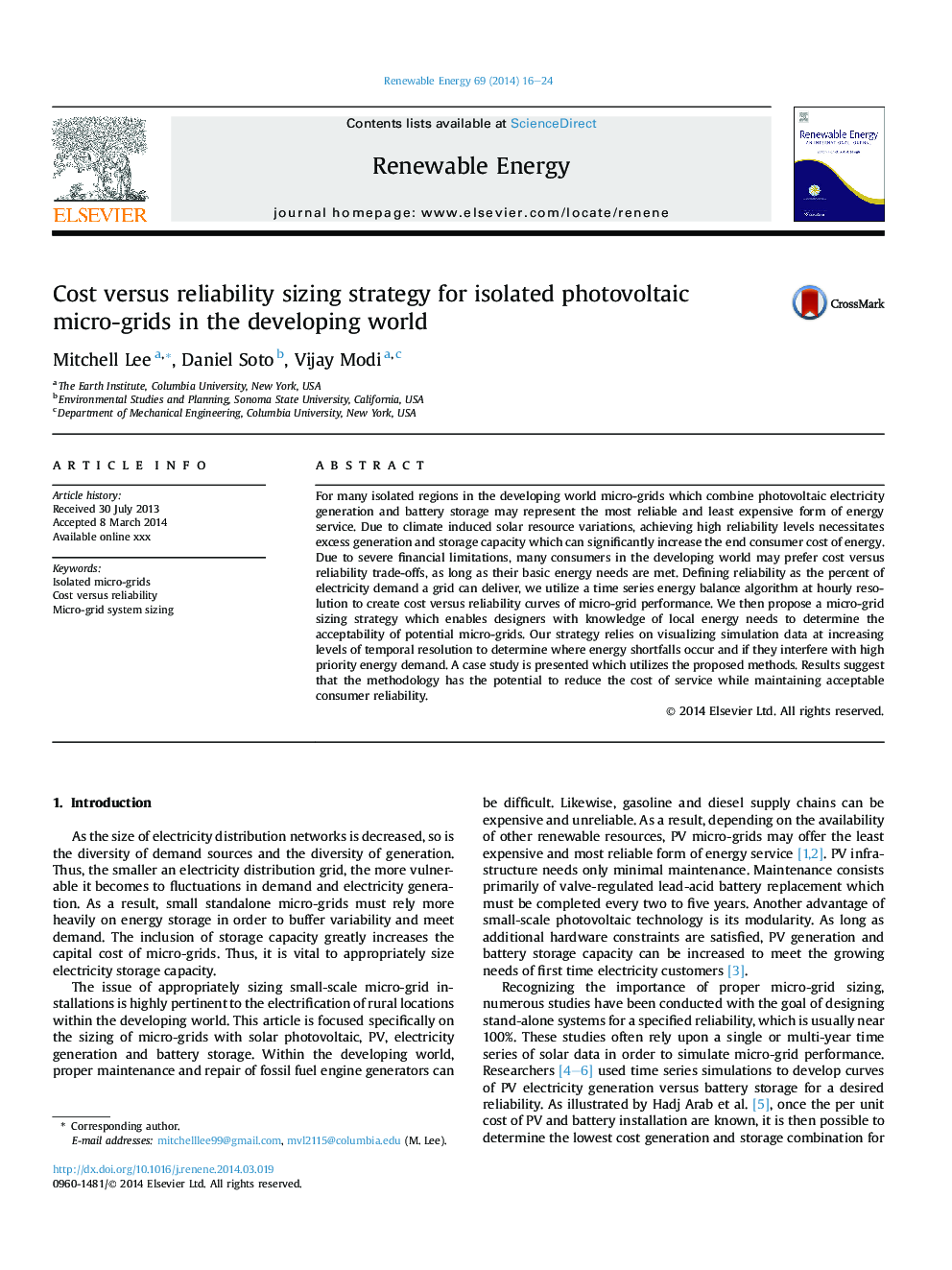| Article ID | Journal | Published Year | Pages | File Type |
|---|---|---|---|---|
| 6768031 | Renewable Energy | 2014 | 9 Pages |
Abstract
For many isolated regions in the developing world micro-grids which combine photovoltaic electricity generation and battery storage may represent the most reliable and least expensive form of energy service. Due to climate induced solar resource variations, achieving high reliability levels necessitates excess generation and storage capacity which can significantly increase the end consumer cost of energy. Due to severe financial limitations, many consumers in the developing world may prefer cost versus reliability trade-offs, as long as their basic energy needs are met. Defining reliability as the percent of electricity demand a grid can deliver, we utilize a time series energy balance algorithm at hourly resolution to create cost versus reliability curves of micro-grid performance. We then propose a micro-grid sizing strategy which enables designers with knowledge of local energy needs to determine the acceptability of potential micro-grids. Our strategy relies on visualizing simulation data at increasing levels of temporal resolution to determine where energy shortfalls occur and if they interfere with high priority energy demand. A case study is presented which utilizes the proposed methods. Results suggest that the methodology has the potential to reduce the cost of service while maintaining acceptable consumer reliability.
Related Topics
Physical Sciences and Engineering
Energy
Renewable Energy, Sustainability and the Environment
Authors
Mitchell Lee, Daniel Soto, Vijay Modi,
